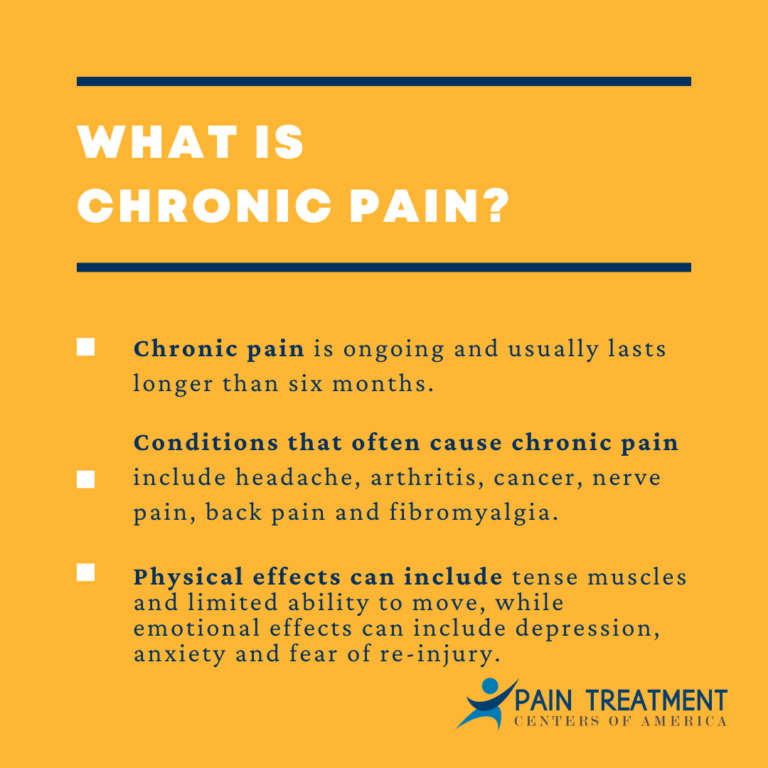
The Power of Chronic Pain Advocacy | Transforming Lives
Chronic pain, generally defined as a pain condition that persists for more than three months, is a complex medical issue affecting 20.4% of U.S. adults.
This pain can range from a dull ache to burning, shooting, or throbbing sensations, disrupting daily activities and significantly reducing the quality of life.
Despite the availability of various treatment options, managing chronic pain remains a challenge due to its multifaceted nature.
This article aims to shed light on chronic pain, the stigma associated with it, and the advocacy efforts to address these issues.
Table of Contents
The Complexity of Chronic Pain Treatment
Chronic pain treatment is complex because pain is not just a physical sensation. It’s intertwined with emotional and psychological aspects, making it impossible to treat with a one-size-fits-all approach.
Moreover, what works for one person may not work for another, necessitating highly personalized treatment plans.
This complexity is often overlooked, resulting in inadequate treatment and the perpetuation of the stigma surrounding chronic pain.

The Stigma of Chronic Pain
Individuals living with chronic pain often face societal stigma, which further complicates their situation.
Misunderstandings about the nature of chronic pain can lead to dismissive attitudes, causing patients to feel isolated and misunderstood.
This stigma can deter people from seeking help, exacerbating their pain and distress.
Advocacy for Chronic Pain: Examples of Stigma and Misunderstanding
- A person suffering from migraines might be criticized for “over-reacting” to what others perceive as just a headache.
- Fibromyalgia patients often face skepticism due to the “invisible” nature of their condition; their pain is often dismissed as being “all in the mind.”
- People with back pain may be labeled as lazy or unfit, without understanding the debilitating nature of their condition. Common workouts often aggravate the injured area.
- Individuals with complex regional pain syndrome (CRPS) may be accused of faking their pain for attention or sympathy due to the fluctuating symptoms of the condition.
- Chronic fatigue syndrome patients commonly face disbelief and are told to “just get more sleep,” which oversimplifies their struggle and belittles their condition.
Each of these examples underscores the dire need for increased understanding, compassion, and advocacy for those suffering from chronic pain.
It is essential to recognize that chronic pain is a legitimate medical condition that requires proper treatment and support.
Advocacy efforts for chronic pain are gaining momentum, with organizations like the American Chronic Pain Association (ACPA) and
The U.S. Pain Foundation works tirelessly to raise awareness, educate healthcare professionals, and provide support for those with chronic pain.
These organizations aim to reduce the stigma surrounding chronic pain and promote a more comprehensive understanding of the condition.
In addition to advocacy efforts, it is crucial for individuals to educate themselves and their loved ones about chronic pain. This can help break down barriers and foster empathy towards those living with this debilitating condition.
Perspectives from Medical Professionals
Medical professionals specializing in chronic pain stress the need for a comprehensive approach to treatment, incorporating physical, psychological, and lifestyle interventions.
They highlight the importance of ongoing research to develop more effective and personalized treatments.
Examples of Comprehensive Chronic Pain Treatment Approaches:
- Multidisciplinary Pain Clinics: These clinics offer a team approach to chronic pain treatment, involving doctors, psychologists, physical therapists, and occupational therapists. They provide comprehensive care tailored to the individual’s needs, including medical treatments, cognitive-behavioral therapy, and physical rehabilitation.
- Pain Management Programs: Offered by hospitals or health centers, these programs combine physical, psychological, and medical therapies. They not only focus on pain relief but also on improving function and quality of life.
- Self-Management Programs: These involve educating patients about their condition and equipping them with skills to manage their pain. Techniques taught might include relaxation, stress management, pacing activities, and cognitive reframing.
- Lifestyle Interventions: These may include dietary changes, exercise programs, and sleep hygiene practices. Regular physical activity, for instance, has been shown to reduce pain symptoms and improve mood in people with chronic pain.
- Mind-Body Therapies: Techniques such as mindfulness, yoga, and meditation can enhance the body’s natural pain relief mechanisms, reduce stress, and improve mental well-being.
- Pharmacological Intervention: Personalized medication plans are developed based on the type and severity of the pain, potential side effects, and the patient’s overall health and lifestyle. Medications might include analgesics, anti-inflammatory drugs, or antidepressants.
- Physical Therapy: Specialized exercises to increase strength, flexibility, and overall mobility can help manage chronic pain, especially for conditions like fibromyalgia or chronic back pain.
The Latest Research Developments
Significant strides are being made in chronic pain research. Scientists are delving deeper into the biological basis of chronic pain, hoping to discover new treatment avenues.
Recent advancements in understanding chronic pain include:
- Neuroimaging Studies: Modern neuroimaging techniques such as functional MRI and PET scans are being used to visualize changes in brain activity associated with chronic pain. This can help in identifying the precise areas of the brain involved in pain perception and modulation.
- Genetic Research: Scientists are studying the genetics of pain to identify specific genes that might predispose individuals to developing chronic pain conditions. This can potentially lead to gene-targeted therapies in the future.
- Cellular and Molecular Studies: Researchers are exploring the cellular and molecular mechanisms that underlie chronic pain, including the roles of various neurotransmitters and immune cells. This knowledge can guide the development of innovative drug therapies.
- Clinical Trials: These trials are testing the effectiveness of new medications, therapies, and interventions for managing chronic pain. Participants in these trials can potentially gain access to novel treatments before they become widely available.
- Psychosocial Research: There is growing recognition of the role of psychological and social factors in chronic pain. Research in this area focuses on how stress, mood, and social support influence pain perception and coping strategies.
Conclusion
- Like all advocacy, chronic pain advocacy is a collective effort. Everyone can play a part, whether by learning more about chronic pain, supporting advocacy groups, or spreading awareness in their communities.
It’s time to break down the barriers of stigma, misunderstanding, and access to help those living with chronic pain lead fulfilling lives.
Chronic Pain Awareness Month in September is an excellent opportunity to get involved.
Let’s stand together in understanding, compassion, and action for the millions affected by chronic pain.
Resources
NCCIH: National Center for Complementary and Integrative Health
Related Articles: Benefits of 5HTP for Anxiety, Chronic Pain & ADHD | Manage Chronic Pain while Traveling



